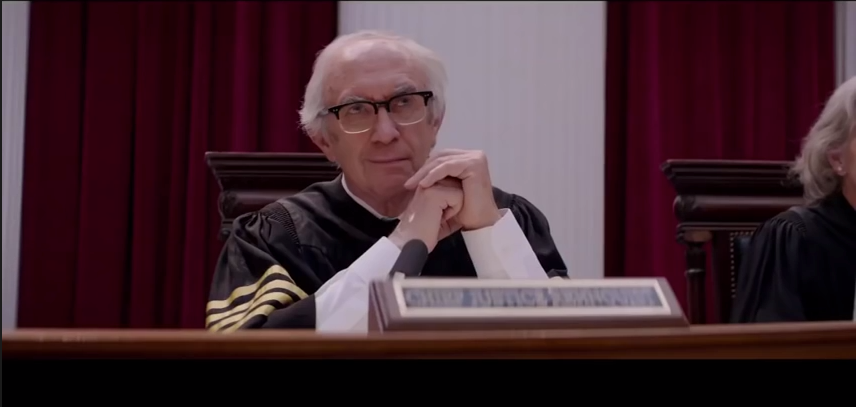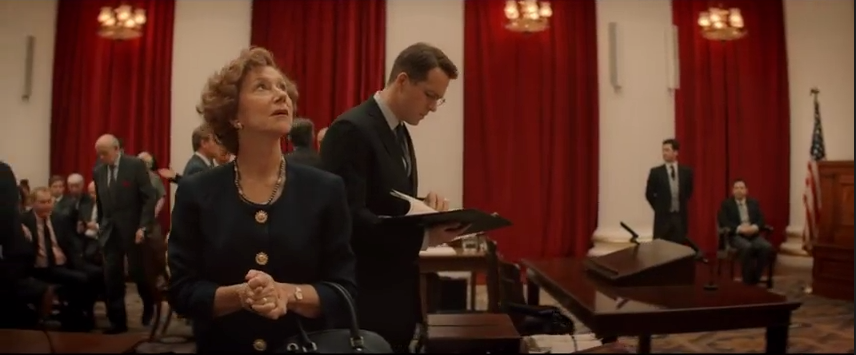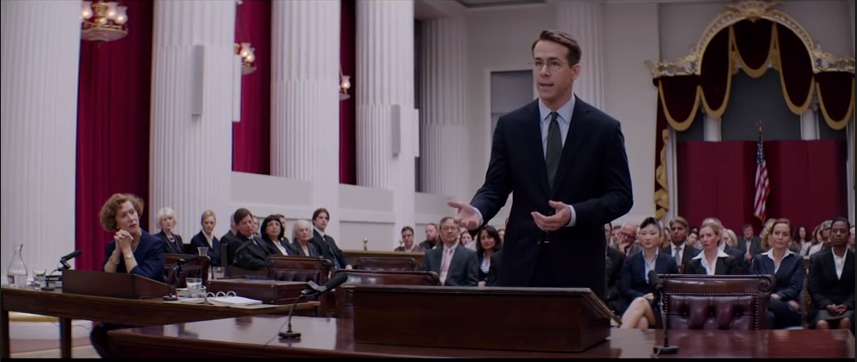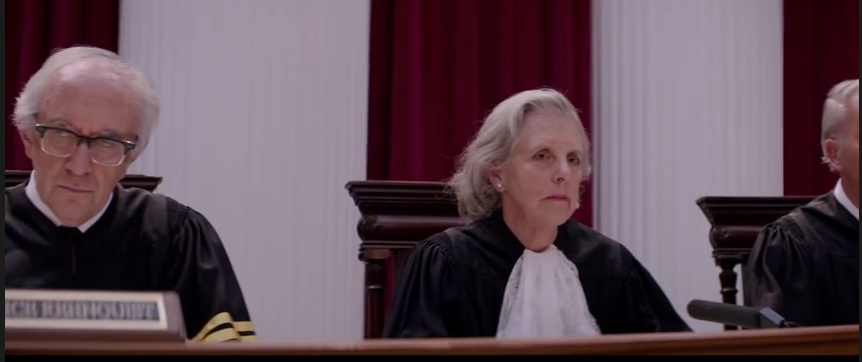Woman in Gold tells the story of Maria Altmann, who sued the Austrian Government to recover paintings that were stolen by the Nazis. This case culminated in the Supreme Court’s 2004 decision in Republic of Austria v. Altmann, finding that the Foreign Sovereign Immunities Act was not retroactive, and did not serve as a jurisdictional bar. The movie itself was okay (great story, weak acting other than Helen Mirren), but the scene in the Supreme Court was so terrible, I laughed out loud in the theater.
The entire scene lasted maybe two minutes, and it was painfully inaccurate.
First, the design of the Court wasn’t even close. There were red curtains on the side, no bar separating the lawyers from the audience, and Altmann (the client) sat second chair! Before the hearing started, she took out a box of cough drops and gave one to her lawyer, Schoenberg.
The actors they selected to play the Justices were passable, but the name tag in front of Chief Justice Rehnquist was absurd. (At least they got the gold stripes).

Also, why in the world is there a fan next to Justice Breyer!? Is he not cool enough on his own (don’t answer that).
Justices Kennedy and Thomas have a carafe of water in front of them:
And Justice O’Connor has a proper neck doily.
I could not find a video with Justices Stevens, Scalia, Souter, and Ginsburg.
Second, the petitioner got up, said “I’ll be concise”, and made an argument for about 15 seconds. That’s it. Then he sat down. He gets no questions.
Third, the United States got up. The lawyer playing Deputy Solicitor General Thomas Hungar looked like he was about 70 years old. At least he was wearing a morning coat. He said something about how if this case goes forwards, other claims against Japan may be brought. This actually happened:
Chief Justice Rehnquist: Yes.
Mr. Hungar: The… we… there are currently cases pending against countries such as Japan and Poland, with which… which this country previously entered into agreements which both sides thought had resolved the issue entirely, and to now retroactively apply a substantive provision that this Court recognized in Ex parte Peru is a substantive, not merely jurisdictional, but a substantive legal defense, to apply that retroactively would be to change settled expectations, change the rules, and it should not be done.
Then Chief Justice Rehnquist looked at the octogenarian Altmann, and said something to the effect of, “If we rule for you, then we have to worry about claims from Japan.” Everyone in the audience started laughing. (Well, the Chief did join Justice Kennedy’s dissent, ruling against Altmann, so maybe he was thinking this.).
Fourth, Schoenberg’s argument was so, so, so terrible. Here is a rough transcript:
We’re very sensitive to the government’s concerns, Mr. Chief Justice. It is the can of worms argument . . . . We recommend opening the can. And extracting one little worm with a pair of tweezers and quickly closing it shut again . . . . This is a case of one woman, wanting back what is rightfully hers . . . . Let’s give her justice too.
Yes, this is actually the argument made. I burst out laughing. I couldn’t help it.
Perhaps the only thing that was semi-accurate was that in the movie Chief Justice Rehnquist asked a question of Schoenberg. I had no idea what the question was, something about jurisdiction that made no sense. In the movie, Schoenberg replied something to the effect of “I didn’t understand that question.” Apparently, that actually was said. Justice Souter asked some question, and Shoenberg replied:
“Well, I’m . . . I’m not sure that I understand the question.” (Turn to 27:59 on Oyez).
There was one scene earlier in the movie where Ronald Lauder (the heir to the Estee Lauder fortune) unsuccessfully tries to get Altmann to drop her lawyer and have someone more experienced argue before the Court. (Her lawyer had never argued a case before SCOTUS before). According to “Lady in Gold,” the book that was the basis for the movie, Lauder suggested that she hire Robert Bork! According to Oyez, Bork only had one argument since the 1990s–the 2002 case of Festo Corp. v. Shoketsu Kinzoku Kogyo Kabushiki Co. The role of Lauder was played by some actor named Ben Miles, but I think Tom Goldstein could have pulled it off much more naturally–and maybe he would have snagged the client too!
Watch the clip at your own peril. It’s painful to watch.




